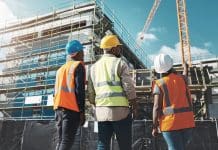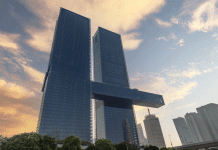In this free online series hosted by The Building Society, Elliott Wood associate director, Steve Faulkner covers designing with sustainability and deconstruction in mind
In the previous session, Faulkner discussed the Elliott Wood approach to reuse, how buildings can become material banks, and how 3D modelling helps deliver efficiencies.
In this fourth and final session, he will look at designing for disassembly and adaptability.
This session covers:
- Why we need to change;
- Lego v Arfix models;
- Why drawings are instruction manuals;
- And case studies.
Steve Faulker said: “The objective of reuse for design and disassembly is to address how we can keep materials in construction to help generate a circular economy.
“There is a need for us to design buildings so they can be taken down and refurbished more easily with minimum disruption and maximising the reuse of the materials that are embedded in that building.”
Case study
Faulkner goes on to showcase the Astrea project in Berkeley Square which utilised a functional adaption and disassembly strategy. He says: “This promoted a number of key issues that allowed the designers to integrate adaptability into the scheme.”
The project incorporated:
- Feasibility – the likelihood to contain multiple or alternative building uses
- Accessibility – design aspects which allowed for the replacement of all major plant within the life of the building
- Versatility and convertibility – adaptability of the internal environment
- Adaptability – building ventilation strategy adapts to future occupants
- Refurbishment potential – the potential of major refurbishment.
Commenting on the project, Faulker said: “All of these aspects make this building incredibly robust and adaptable for generations to come.
“I think this sort of thing should be considered on every project.”
Faulkner ends the session saying: “The main message I wanted to get across [through these webinars] was that BIM can definitely be used to help drive a number of key issues in our industry.
“BIM has a number of functions and we need to able to talk about these early.”
You can view all of the previous sessions here.
















